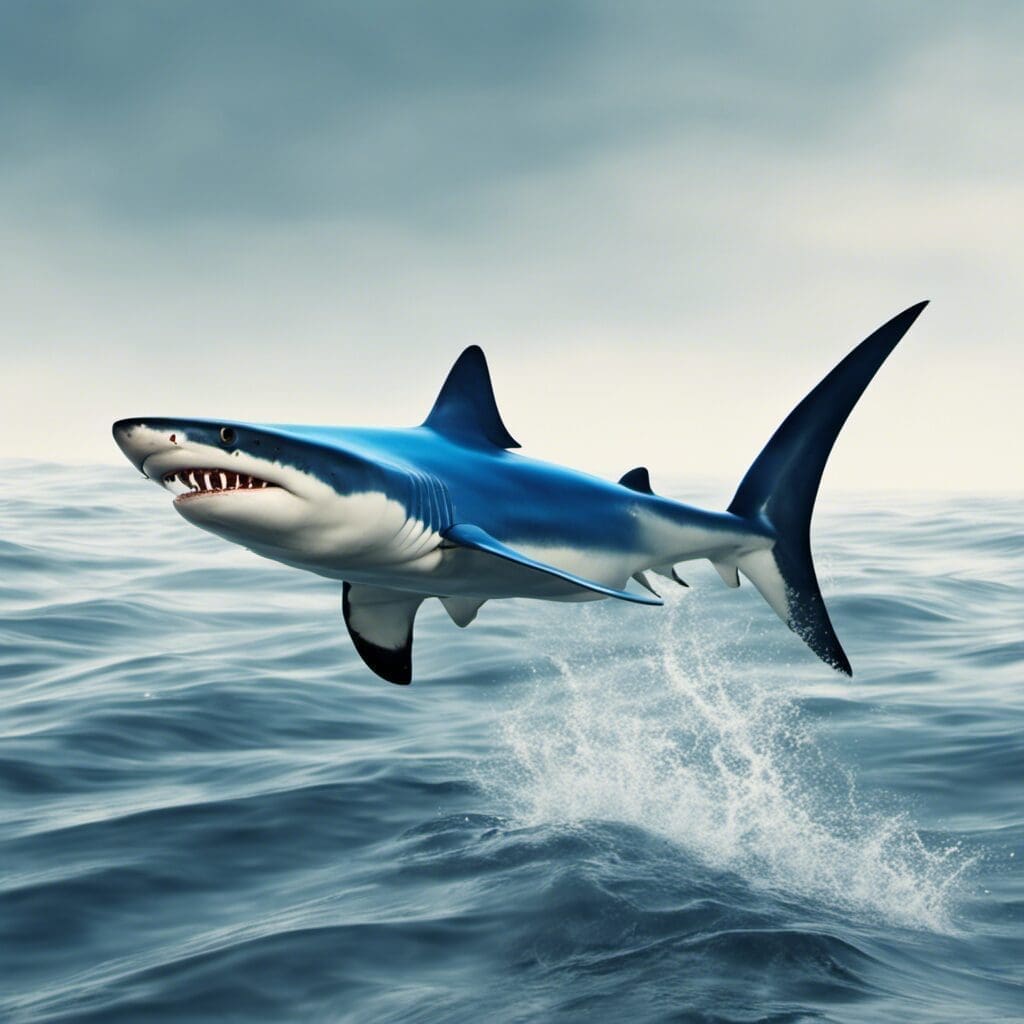Introduction
The Blue Shark (Prionace glauca) is a distinctive species from the Carcharhinidae family, easily recognizable by its streamlined body and deep blue color.
Conservation Status
As per the International Union for Conservation of Nature (IUCN), the Blue Shark is partly classified as ”Near Threatened”. Current conservation efforts focus on mitigating bycatches in high seas fisheries.
Statistics
| Attribute | Average | Range |
|---|---|---|
| Length | 3.5m (11ft) | 2.2 - 4m |
| Weight | 30 - 60kg | 27 – 120kg |
| Lifespan | 20 years |
Distribution
The Blue Shark is found in the open oceans worldwide. They perform significant migrations tied to temperature changes and breeding purposes. Each year they journey from the equator towards the poles in summers and reverse the course in winters.
Habitats
Blue Sharks typically inhabit the cool, deep-ocean waters. They mostly stay within the temperature range of 7 – 16°C and thrive in depths ranging from 350 - 400m.
When and Where to See
Blue Sharks are visible mainly in the summer months in cooler northern waters. The best viewing times are usually the early morning and late afternoon.
Best Fishing Locations
- North Atlantic Ocean off the coast of New England, USA
- Azores, Portugal
- Canary Islands, Spain
- Madeira, Portugal
- Osaka, Japan
Locating Blue Sharks is generally a matter of knowing their migration patterns and locating their favored temperature ranges in the open ocean.
How to Catch
Blue Sharks are typically caught using chum and bait, often small fish or squid. The best times to fish for Blue Sharks are during their peak summer migration season, with early morning and late afternoon being the most fruitful times.
Identification Guide
Blue Sharks are notable for their vibrant deep-blue coloring. They have a slim, sleek body with long, slender, pointed pectoral fins, and a large, triangular dorsal fin.
Culinary
While Blue Shark is consumed in some parts of the world, its taste is generally considered to be lower quality than other sharks. It is often used in dishes like shark fin soup and fish and chips. Its meat needs proper preparation to avoid potential toxicity.
Additional Information
The Blue Shark feeds predominantly on small fish and squid. Despite their predatory nature, they are predated by larger sharks and orcas. Human-induced threats include fishing as a bycatch, and direct hunting for their fins and meat.

